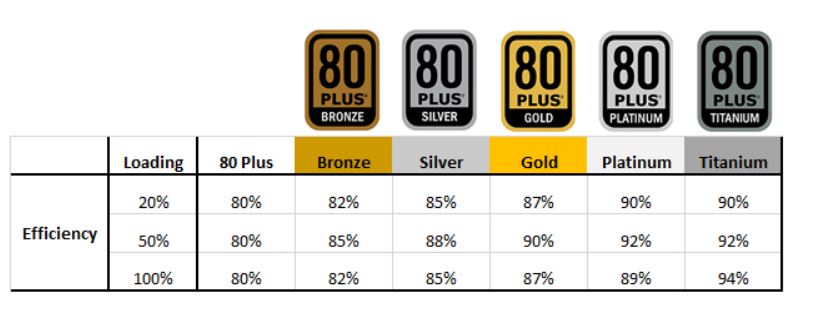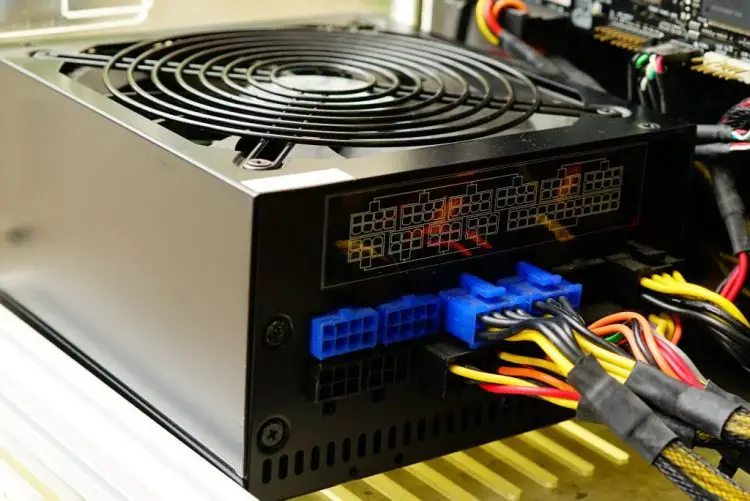Power supply wattage for gaming pc
Power supplies are commonly misinterpreted and undervalued PC equipment. Many customers purchase a PC power supply solely based on overall wattage, assuming that higher is always better. Others pay no attention to the power supply (PSU) they choose and accept whichever atrocity came with their system.
The wattage requirement entirely depends upon the type of work you want out of your PC. In the same way, the wattage requirement for a gaming PC depends on the components you’ll fit inside that PC.
But before we dig in, just to let you know, having a 750W power supply is the sweet spot for a gaming PC these days.
However, given how critical a decent power supply is to a system’s reliability and long-lasting reliability, it’s a shame that PSUs are overlooked in favor of flashier parts like graphics cards and Storage.
It does not really help that the power supply market is flooded with items from fraudulent producers who employ subpar parts and exaggerate the processor’s potential, especially now that bitcoin prices are skyrocketing, creating a greater preference for graphics processors and power supplies. However, if you have the correct information, selecting a reliable, efficient power source is possible.
What wattage power supply do you need?
The power supply on your desktop is critical to the operation of your computer. It converts the AC power from your house or business into the direct current required by your system and then delivers that voltage to all of its components.
The first step in constructing a dependable system is to have clean, constant power. It is mission vital. Then what does the wattage or performance quality of a power supply mean exactly? And how much power do you need in your next ideal computer?
Wattage and Efficiency
To commence, power supplies have two key ratings to consider: efficiency and wattage. The wattage is self-explanatory: it refers to the maximum amount of power the supply can deliver when fully loaded. As a result, a 600W power supply can give up to 600 watts to the computer’s components.
The performance value means how well it converts AC power to DC, or, to put it another way, how much power it wastes in the process.

A Bronze Rated power supply, for instance, must be at least 82 percent efficient at full load (with higher efficiency at lower loads) and will convert 82 percent of the Ac voltage to DC voltage, squandering 17.9 percent of the original watts to heat.
That indicates a 600W Bronze Certified PSU with an efficacy of 82 percent will draw around 700W to output 650W.
Wattage Depending on Factors
The amount of Wattage when building a gaming PC is determined by a number of factors, including:
- The overall setup type.
- The games that are currently being played
- The amount of time spent playing and the intensity with which it is done.
- The processor, hard disc, and graphics processing that were used.
- The computer’s mainboard.
- The number of people who are playing at the same time.
How Much PSU Really Matters?
To begin, always choose a power supply from a reliable brand and read customer reviews before purchasing. Avoid low-cost, generic power sources, which are often subpar. Look for recognized brands with excellent warranties and customer service.
Manufacturers such as Corsair, Seasonic, EVGA, and Antec have a reputation for making greater power supply, but they may have a few stinkers among all the aces.
Bigger, more powerful units are favored over small, light units. Greater power supplies almost always have larger capacitors, chokes, and other interior parts, as well as larger heat, sinks for improved heat dissipation—all of which add weight.
Another benefit is the use of bigger cooling systems, which circulate more air while producing less noise than smaller fans.
You should double-check the connectors on the PSU to be sure it’ll work with your system. A connector that may be used as a 20-pin or a 24-pin connector is known as a 20+4 pin connector.
Two of the pins in the 6+2 pin connector pictured at right can be snapped on or off to match your requirements.
Keep three key factors in mind when shopping for a power supply: power output, rails, and efficiency.
Output
Power output ratings for a desktop power supply range from 200 to 1800 watts (for ultra-high-end, enthusiast-class products). Higher wattage ratings would be beyond the capacity of a standard 15-ampere electrical outlet.
The number that matters here is the one that represents sustained or continuous power, not the one that represents peak power. Usually, the power supply can only function at full capacity for a short time.
Manufacturers commonly list the output of their power supply in watts. A higher-wattage power supply can deliver greater power.
Preferably, each unit will provide plenty of power to your components while also providing some extra headroom in particular instances where you choose to add more later.
Most power supplies reach their maximum efficiency levels with loads ranging from 35 to 85 percent.
To achieve optimal efficiency while leaving room for future expansion, it’s best to build to roughly 50–60% of a PSU’s capacity.
Rails
Manufacturers will list the number of +12V rails in their power supplies in addition to the output power. A “single-rail” power supply features a single high-power +12V rail for delivering electricity to the game’s most power-hungry parts. The output of a “multi-rail” device is split between two or more 12V rails.
Any component connected to the unit will receive all of the power from the supply, independent of the socket or wire used, in a single-rail design. A single-rail power supply, on the other hand, has the ability to provide far more current to your parts in the event of a failure.
Proficiency Framework
A more productive power supply is a superior power supply. The productivity rating of a power supply is pivotal because higher-proficiency frameworks have better parts, squander less power, and produce less hotness, all of which lead to decreased fan clamor.
A power supply with a productivity rating of 80% gives your framework 80% of its appraised watts as power while losing the excess 20% as hotness.
How to choose a PC power supply?
The power supply is one of the least fascinating but most important PC components. Of course, PCs function on power, which isn’t supplied straight from the wall to every component inside the casing. Instead, electricity travels from the power firm’s ac signal (AC) to the direct current (DC) needed by PC components at the appropriate voltage.
It’s enticing to purchase any power source you can find to power your computer. A power supply that isn’t reliable or clean might create a variety of issues, including instabilities that are difficult to pinpoint.
In reality, a malfunctioning power supply can frequently create other issues, such as random resets and freezes that would otherwise go unnoticed.
Although there are various significant elements to consider when purchasing a power supply, like with any other Computer part, determining one of the most crucial factors is surprisingly simple.
You don’t need to sift through statistics or evaluations to figure out how often power you require. Instead, use a device like Newegg’s power supply calculator to figure out how much power your new supply needs to deliver.
You must choose your components from the drop-down lists for each category to utilize the tool. The above utility is up to date with the most recent CPU, motherboard, graphics processing unit (GPU), random access memory (RAM), and other options.
Using a kill-a-watt device and taking some readings under full load is the most accurate approach to measuring your system’s power demands; this is useful if you wish to replace the present PSU. This approach will only offer you an estimate because it does not account for the efficiency of your power supply.
The GPUs are the most energy-intensive components in today’s systems, followed by the CPUs.
Sadly, manufacturers do not provide accurate information on GPU power consumption, and to make matters worse, you must also consider the possibility of power spikes, which can cause the system to reboot if the PSU isn’t powerful enough to handle them.
Accepting that you can manage fixed strings and simply need a PSU for a conventional plan, there’s not a great explanation to pay something different for a completely estimated contraption.
A full or semi-estimated arrangement is the best methodology to use the base of wiring and do whatever it takes not to have a significant number of wires in your system.
People are ending up being continuously aware of the impact of the power supply on a structure’s overall uproar yield. Your power supply, as uncommon as it may sound, can basically influence how much disturbance your PC makes while it’s truly locked in.
Does High Wattage Matters in a Power Supply?
The idea that a high-wattage power supply will pump too much power into your gadgets, resulting in overheating and burnout is untrue.
Only the required wattage will be supplied by the power supply. A device that requires 50 watts, for example, will only receive 50 watts from a 250-watt source, not the complete 250 watts.
The electronics in your computer will consume a finite quantity of power, which will be unaffected by the size of any PSU that is larger than the amount of power you’ll require. When the quantity of electricity drawn from the wall fulfills the needs of the computer, a larger power supply does not draw more power than a smaller one.
The benefits of a larger PSU are that it will likely contain more “rails,” or distinct sources of power, such as 12 VDC, so you can transfer power to your computer and peripherals without depleting the fewer rails found in a smaller PSU.

Hi, this is Masab, the Founder of PC Building Lab. I’m a PC enthusiast who loves to share the prior knowledge and experience that I have with computers. Well, troubleshooting computers is in my DNA, what else I could say….

